For common sports halls, table contains examples for dimensions and types of sports according to EN 12193. Figure explains the arrangement geometry for luminaires. In individual cases, it may be necessary to improve lighting at the front ends of a hall using additional luminaires (so-called end reinforcement) to elevate illuminance in this area beyond the minimum value.
Lighting of sports halls
In halls that can be sectioned, lighting must be designed and implemented in a way that ensures photometric requirements apply to the entire hall as well as the individual sections. Often, hall sections are only used for training, where lower requirements apply. Glare limitation in particular (see also chapter ) must be ensured for both main viewing directions.
Luminaires must be ball-proof (see chapter ).
The following tables 1 and 2 contain examples for sports hall lighting. They are based on the following assumptions:
the working plane is the sporting area, at max. 0,2 m above the floor
reflectance values for ceiling/walls/floor 0,5/0,5/0,3
maintenance factor 0,8
luminaires with tri-phosphor fluorescent lamps T8 58 W (5.200 lm, LLCG), T5 80 W (6.150 lm, ECG), or LED luminaires (Actison·series, 9.300 lm/82 W, or 14.000 lm/123 W). Lighting and uniformity apply to the principal area PA according to EN 12193.
The luminaires are arranged in rows parallel to the long side of the hall (figures) at distance b1, b2 (where specified) and B/2, with B being the hall width. The distance z of centre points in the direction of the luminaire row is also specified.
For multi-purpose hall use, e.g. for competitions of higher competition levels and training or physical education with lower competition levels, it is recommended to dimension the facility for the highest lighting level (competition level) required. For low lighting requirements and conventional lighting, it is possible to either operate 2-lamp luminaires with series switching in one-lamp operation or to power a number of luminaires which can be taken from the tables by switching off some luminaires in the luminaire rows.
A significantly better and more efficient option is lighting with dimmable DALI interface luminaires. Instead of switching off entire luminaires or individual lamps, the entire lighting installation is dimmed to the desired level, and design parameters such as uniformity are preserved. This achieves the desired lighting installation flexibility and makes it possible to save energy at certain times of use.
Additionally, the use of light management systems can also adapt the lighting level to available daylight and, with the use of appropriate sensors, switch the entire installation off when no one is present. This way, lighting installations are operated at dimmed levels for the majority of their life cycle. For LED luminaires, this can have a positive effect on luminaire service life.
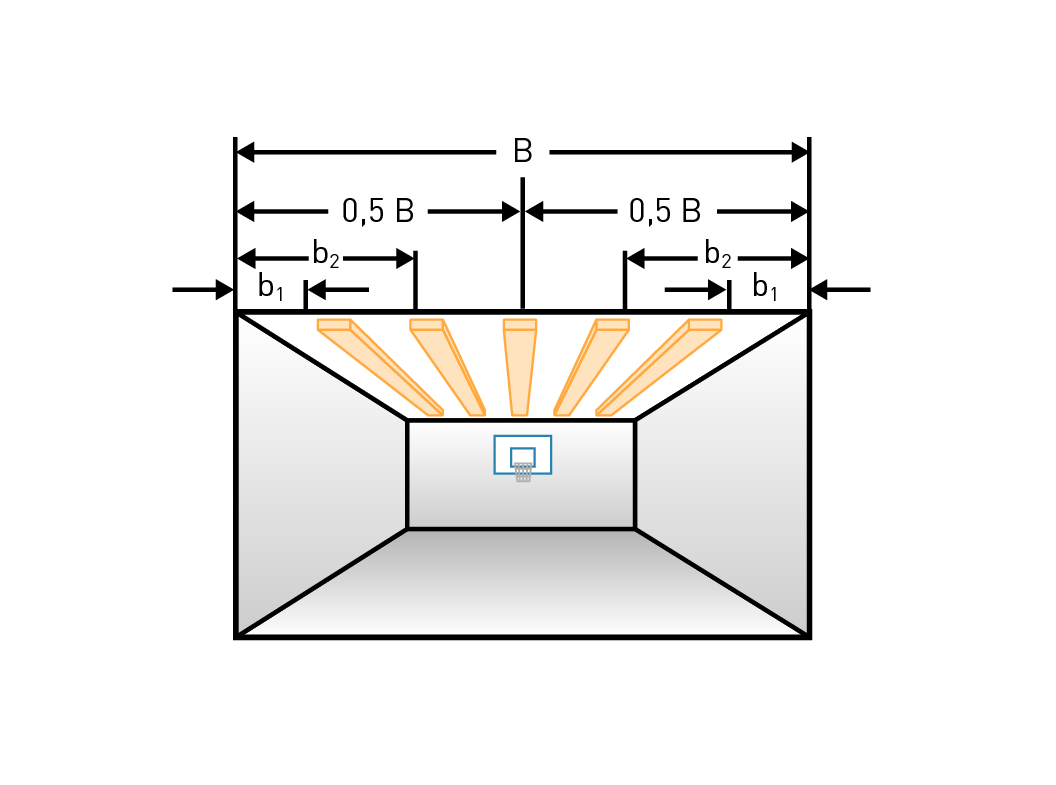
(a) Continuous line luminaire arrangement
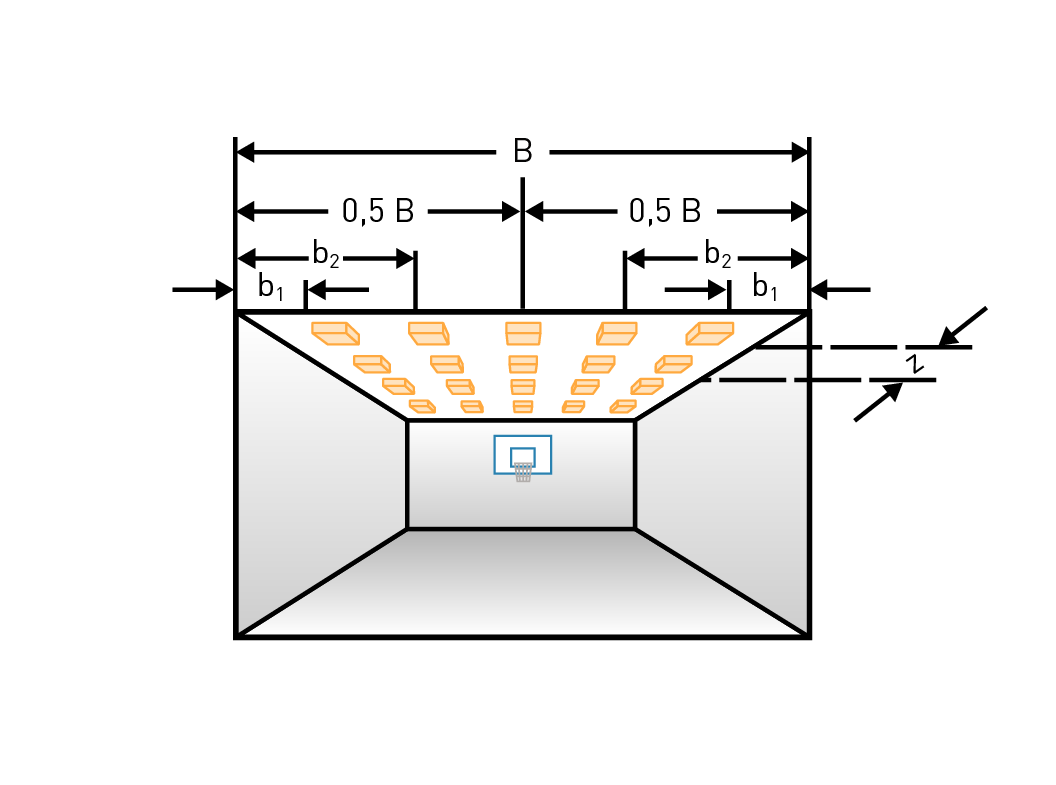
(b) Individual luminaire arrangement
Figure 3.105: Sports hall luminaire arrangements
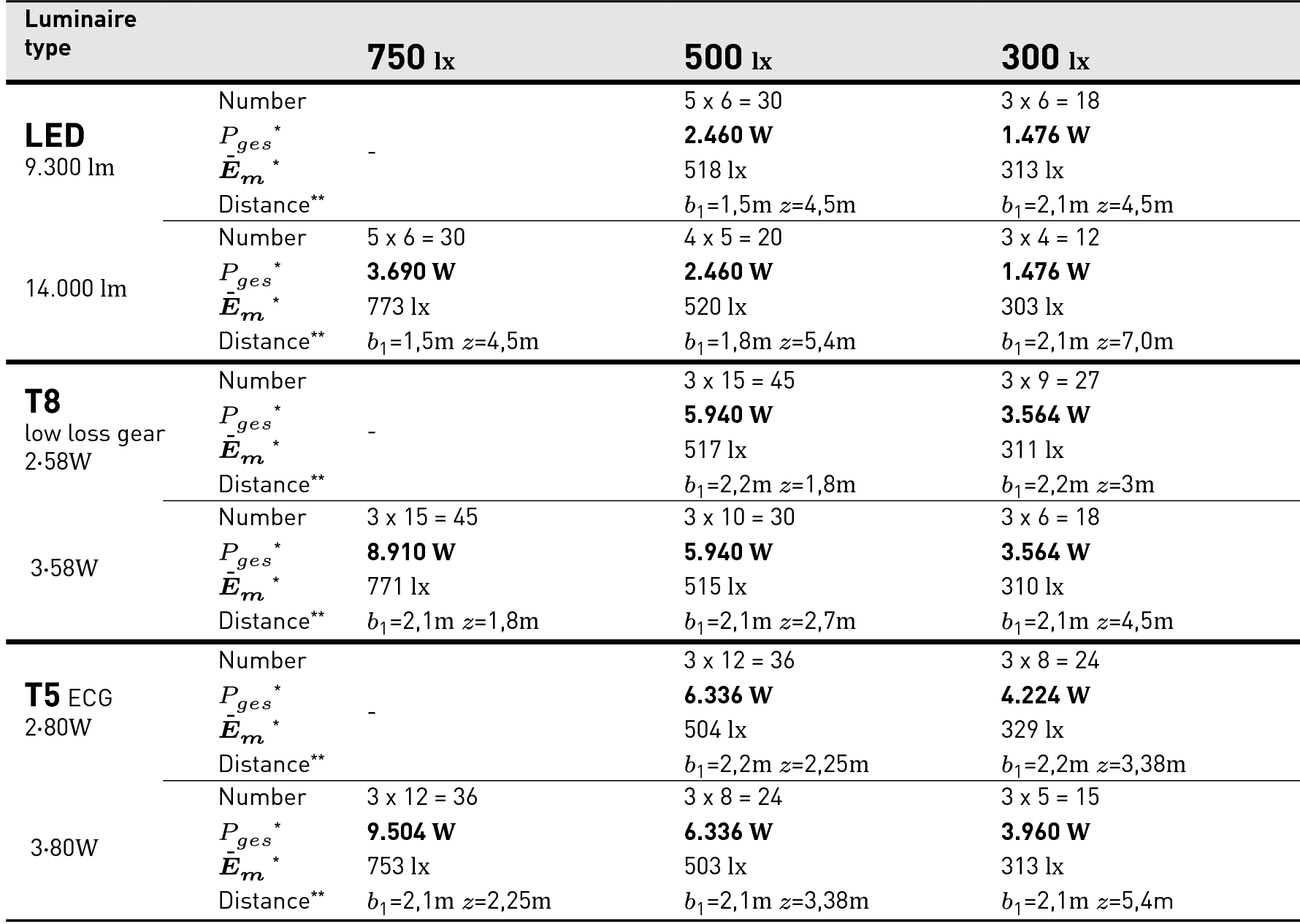
Table 3.76: Example for individual sports hall lighting, floor space 27 m x 15 m, height 5,5 m.
* Underlying assumptions, see above.
** Distances, see Figure.
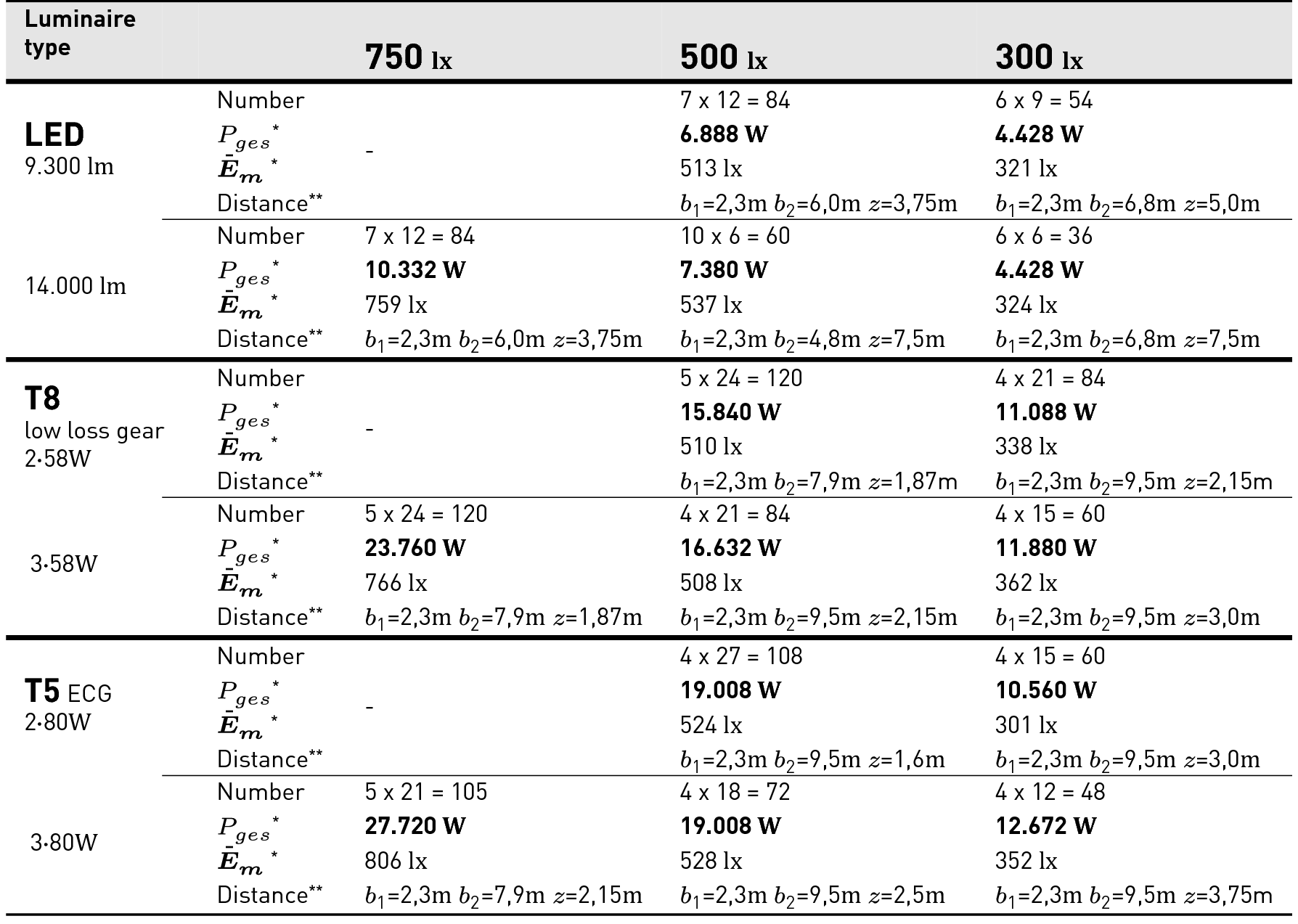
Table 3.77: Example for triple sports hall lighting, floor space 45 m x 27 m, height 7 m.
* Underlying assumptions, see above.
** Distances, see Figure.
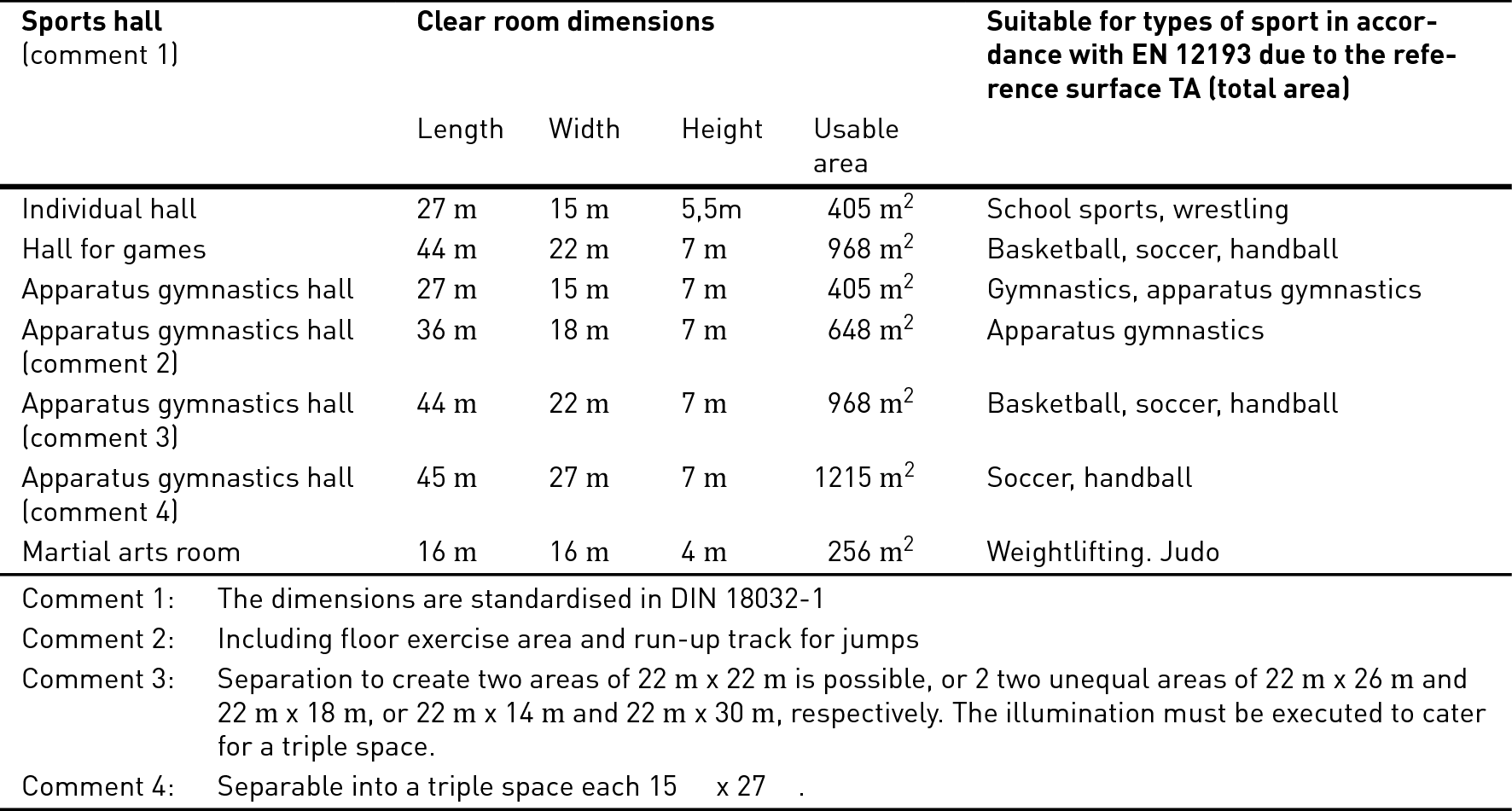
Table 3.78: Sports hall dimensions